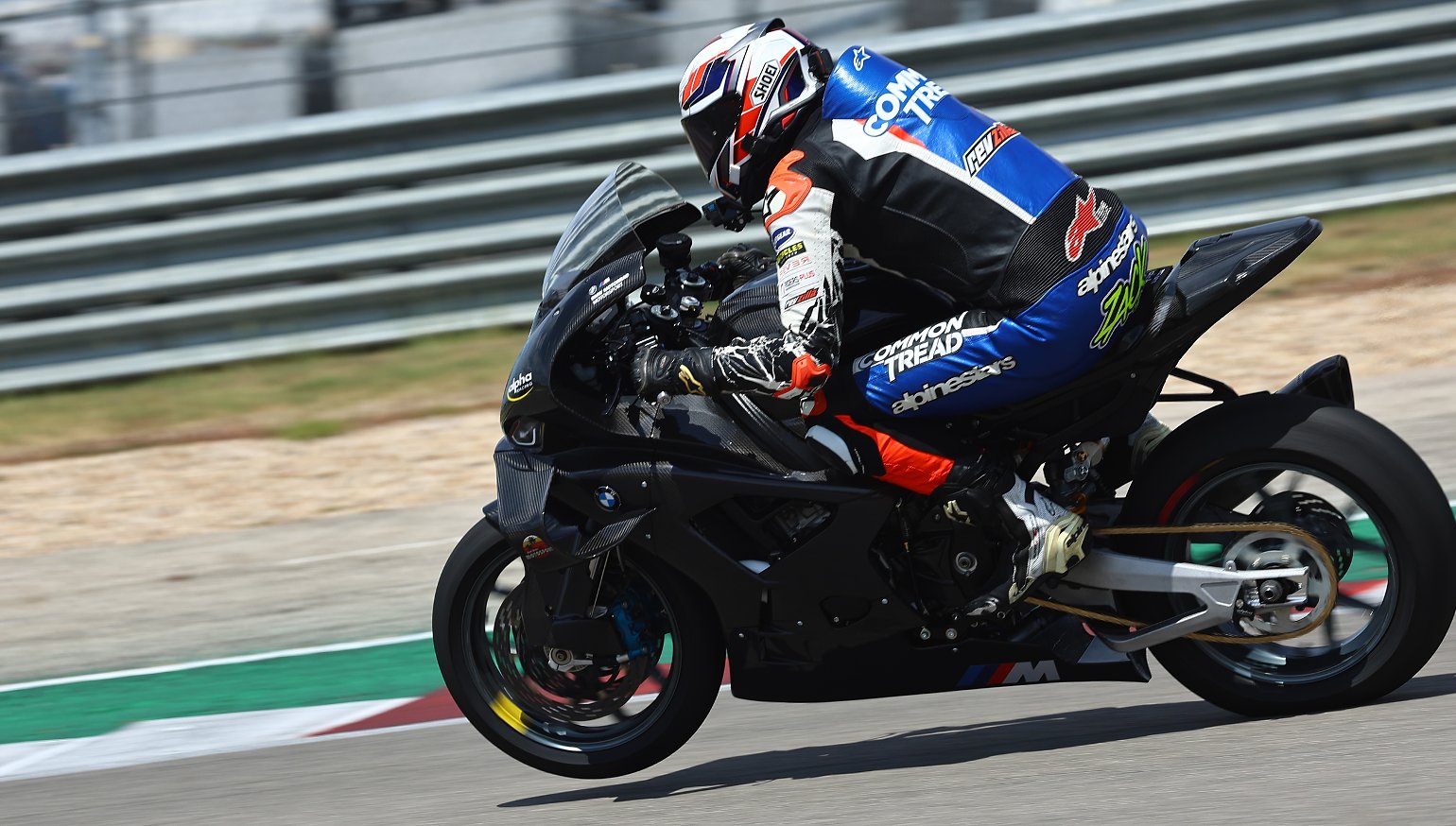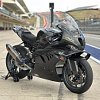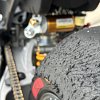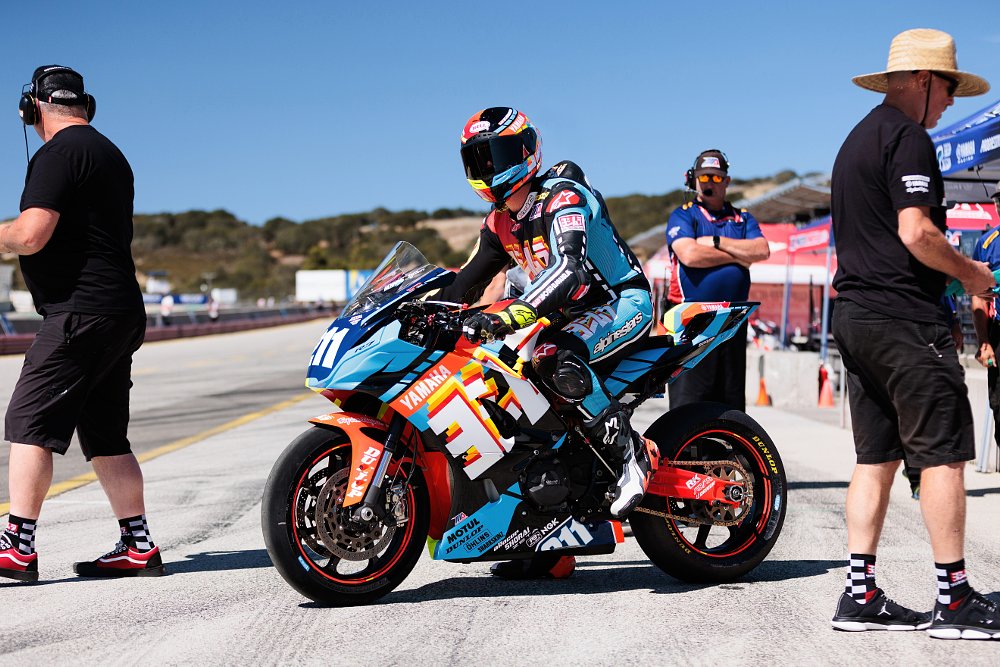If I were 13 years old I would have a poster of this motorcycle on my wall. I would look at it instead of doing homework and dream about what it might be like to ride it. Not as fast as I could go, but at the bike's limit. I would close my eyes. There would be a checkered flag waving, and champagne in the air.
The alpha Racing M 1000 RR is a motorcycle built to satisfy the best riders in the world. Challenge them, even. Chances are I am like you, which is to say I am not one of those riders. I have very few posters, and I suppose if I had a dream it might be to simply afford a machine like this.
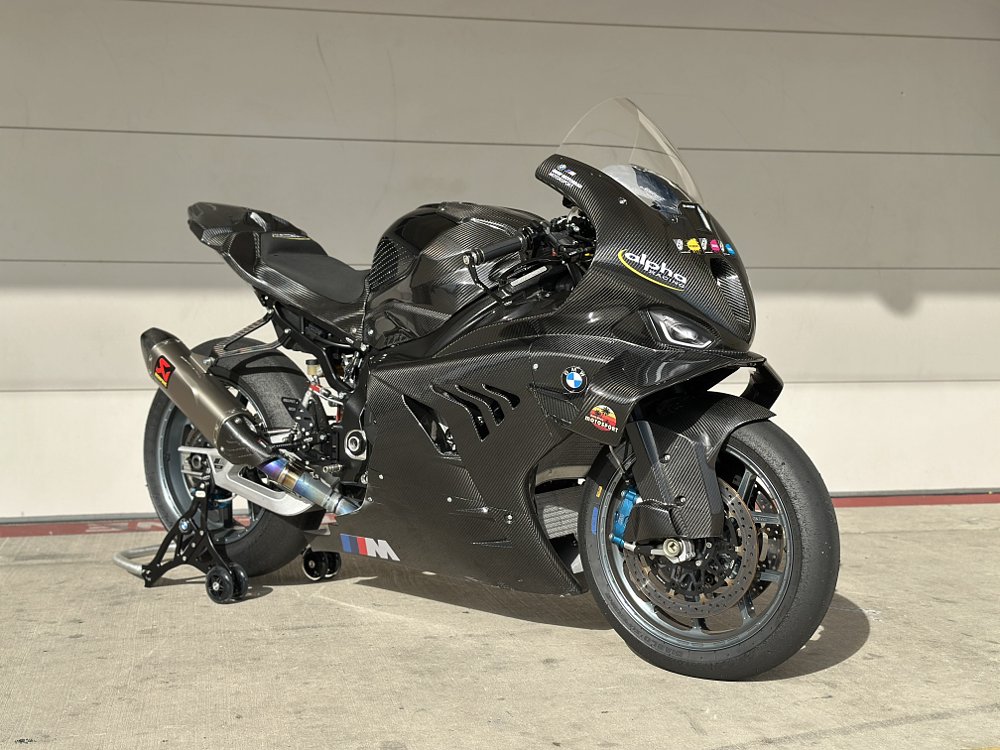
I’ll admit it, my eyebrows went up when I saw the MSRP of 45,900 euros. Just north of $53,000 seems pretty steep for a motorcycle with no ABS and stickers for headlights. That means you can only ride it on a racetrack, and my opportunity came via Kern Track Days hosting BMW’s DoubleRFest at Circuit of the Americas in Austin, Texas.
Spicy as the price is, it could be worse. One of the reasons the pricing is so low (yes, low) is that Alpha Racing doesn’t start with a whole bike, but rather half of one.
A unique Superstock recipe
In the case of the bike I rode, a half-assembled M 1000 RR was purchased from the BMW factory in Berlin — basically just an engine, frame, and wheels — and then the team at alpha Racing got to work. Practically every bit of the bike was then pieced together to push the boundaries of performance, while adhering to the racing rulebook (in this case, MotoAmerica).
This process, and the company itself, grew from a dealership in Germany, Zweirad Hofmann, which eventually spawned a sister company dubbed “alpha Technik.” Somewhat ironically, considering the tenor of this story, power-reduction kits have been alpha Technik’s bread and butter over the decades. Eventually it grew into supporting racing and now the founder’s son, Sebastian Hoffman, oversees building its own kit machines under the name alpha Racing.
The typical, drool-worthy parts are easy to see. An Akrapovič exhaust made of titanium, PVM wheels made from forged aluminum, winglets made with carbon fiber, et cetera, et cetera. The list goes on and is too long for me to cover everything here. Some of the stuff that’s not as obvious is equally cool.
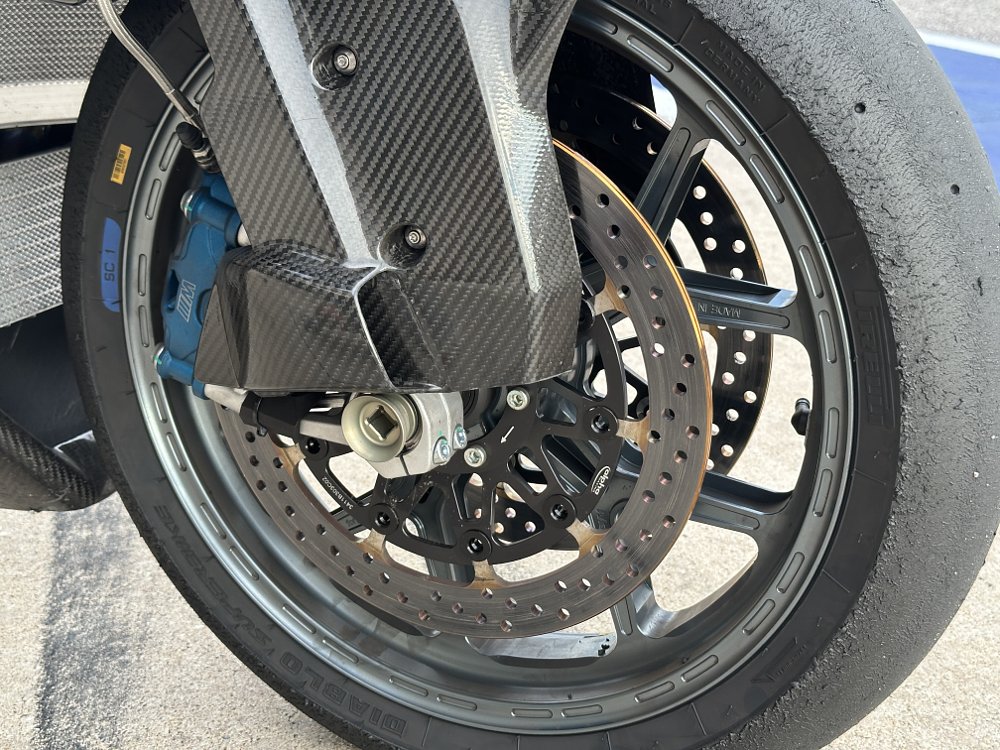
The braking system is a neat snapshot of the machine in total. A standard M 1000 RR is a fairly high-spec motorcycle to begin with, so the front brake calipers on the alpha Racing bike are actually stock, branded with BMW’s famous “M” and made by Nissin. And that’s where the similarities with the stock bike end.
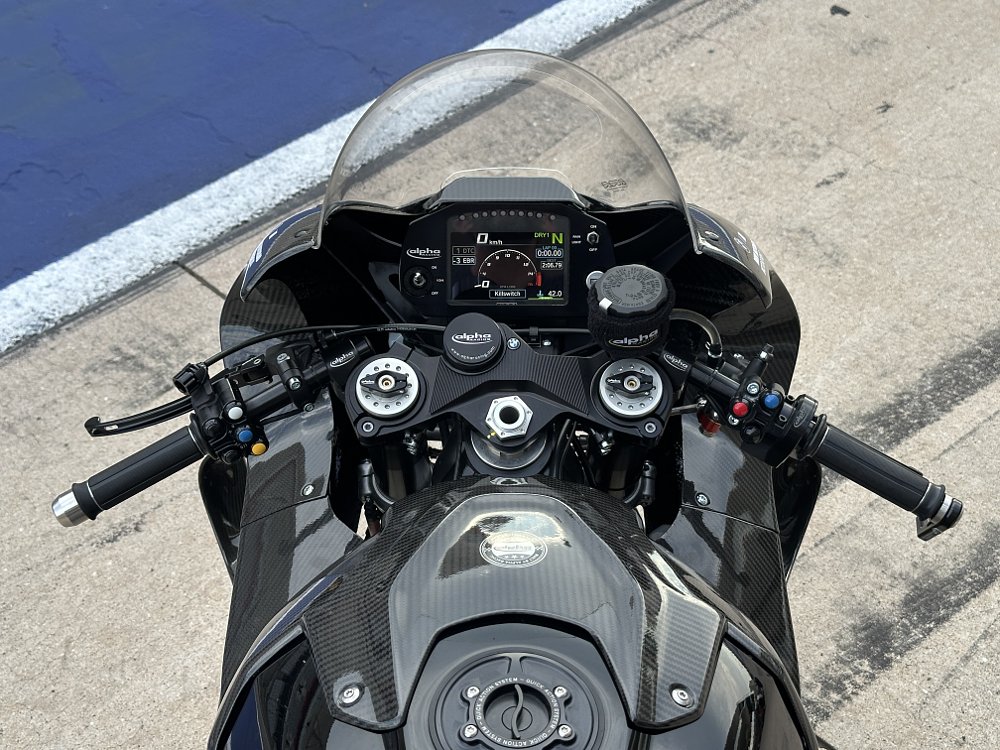
Steel-braided lines run straight from the lever to the front wheel. They do not plumb through an ABS pump. The lever is a race-kit part, with a remote-adjustment knob that runs to the left side of the cockpit, so if the brakes fade during a session the rider can manipulate the lever’s stroke with their left hand. Pads are a double-sintered racing compound.
Then there are the discs, which are seven millimeters thick and weigh four pounds each. That adds more than a pound of unsprung weight to the front wheel compared to a more standard 5.5 mm rotor, but it’s worth it because the thicker metal can soak up more heat. Everything is shaved down or jettisoned, in other words, except the things that very much need to be stronger or heavier for the sake of going fast.
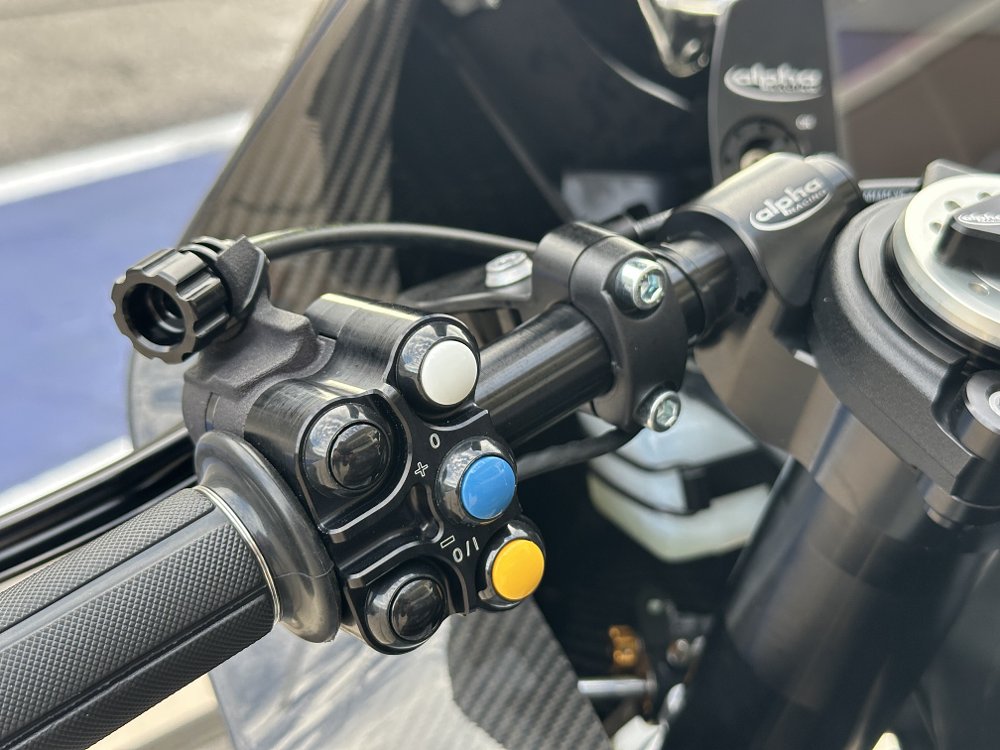
Apply that same pursuit of high performance displayed in the braking system to the whole machine and the bike’s aura comes into focus. Inspecting it up close is like looking at an elite athlete. Cyclists have enormous thighs and practically no body hair, and tennis players have blisters on their hands. The alpha Racing M 1000 RR has huge hoses connecting the radiator to the engine, and strategically placed pucks of low-friction plastic poking out from its skeleton. It is prepared for heat, literal and figurative.
An untethered M 1000 RR at speed
The best racing motorcycles are not meant to be precious, they are tools used to win. Still, fiberglass and metal cost money, and it didn’t help that when Sebastian flipped me the proverbial keys to this particular M 1000 RR the bottom right corner of the dash read “2:06.79.” Just numbers to some, but I knew that a few minutes earlier the bike had been on track underneath Toprak Razgatlioğlu, the current World Superbike champion, who had nearly broken the MotoAmerica Superbike lap record on this lower-spec bike.
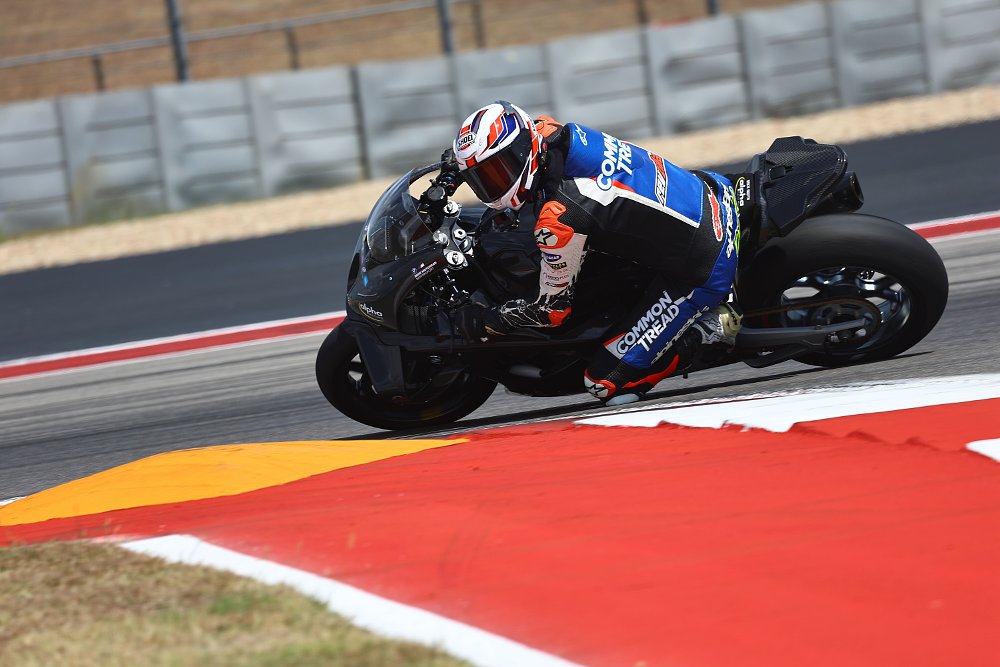
I guess the good news is that I didn’t have to question whether or not the bike was ready. And there wasn’t a lot of time to be sentimental anyway, since I ended up having only one session to take in the sounds and feels of a race-ready Superstock machine. Like most competition superbikes I’ve ridden, the seat is tall. Not crazy, but enough that I was on the balls of my feet with a 34-inch inseam.
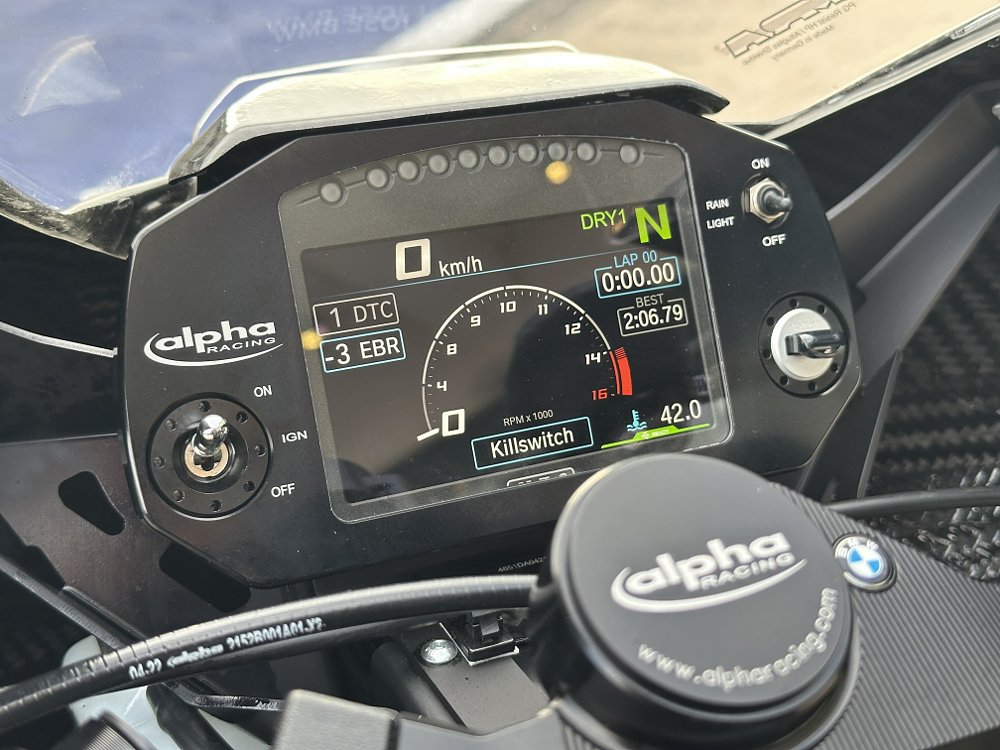
First impressions hit hard on a bike like this. The suspension is stiff and the seat is stiffer. The brakes are incredibly sharp. The clip-ons feel wide apart. The dash has a speedometer and a gear position indicator, but more important and noticeable are the garish lights that illuminate as the engine reaches toward 15,000 rpm. A friendly reminder of the bike’s custom nervous system.
The World Superbike-spec wiring harness is another perfect example of how alpha Racing puts together these machines. It’s not a matter of stripping away what’s unnecessary. The bikes start with nothing and only get what is needed. No blinkers or heated grips here, but it does have something called throttle-split electronics built into the fueling map.
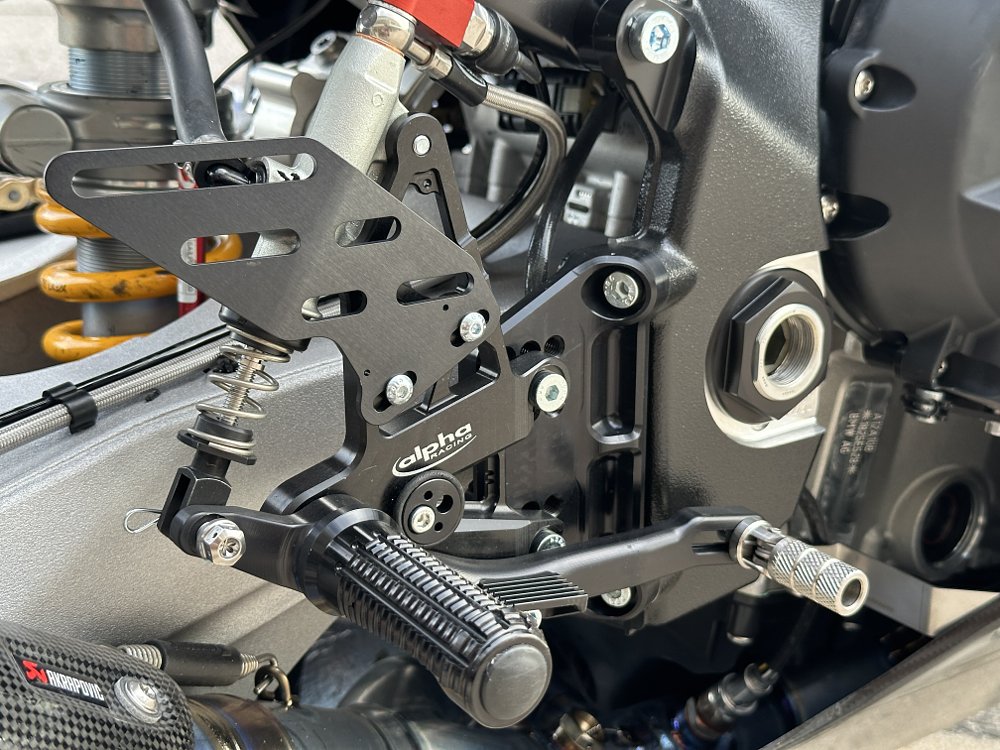
For the sake of efficiency, and controlling an otherwise rampant engine, when a rider first applies the throttle in a corner and not all of the horsepower is required, only two of the four cylinders fire. As the request for power rises the ECU adds the other cylinders as needed. The result is an odd sound from the exhaust and an elegant delivery of more than 200 horses.
Speaking of that, we shouldn’t ignore the fact that the alpha Racing M 1000 RR is fast. I could use words like “extremely” or “absurdly” but I think a quick look at the numbers is more fun. Ready to ride it weighs about 380 pounds, according to alpha Racing. That’s the same weight as a road-ready Kawasaki Ninja 500, except of course this M 1000 RR produces a claimed 218 horsepower.
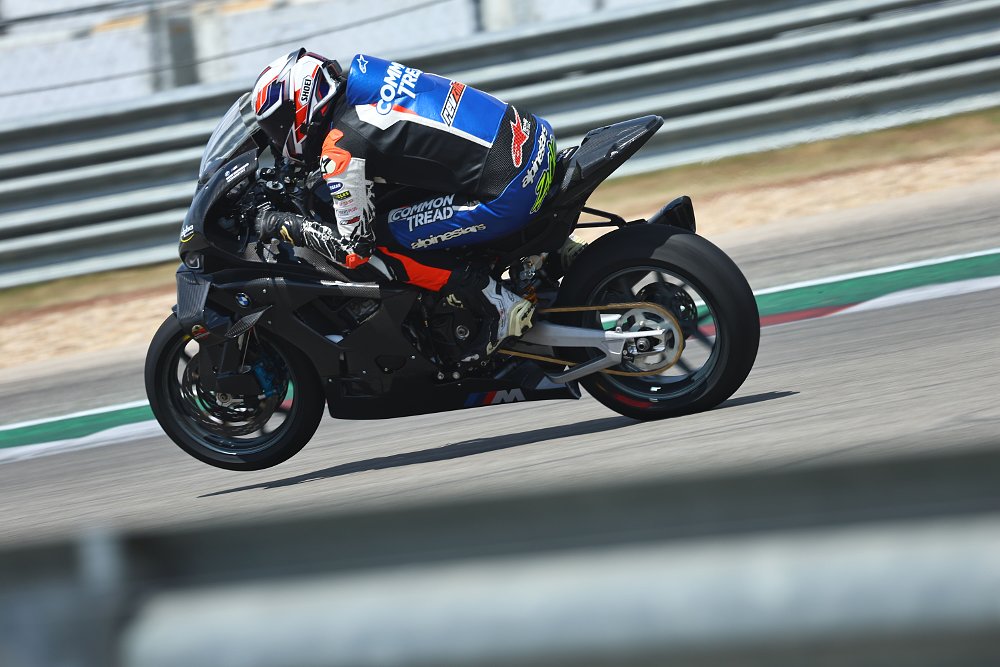
That’s the same number as a stock, Euro-spec M 1000 RR street bike, though an important distinction is that the track-only version from alpha Racing is unbridled from emissions regulations. If you’re trying to imagine a motorcycle that changes direction like an entry level Ninja and has the same power-to-weight ratio as a Toyota Camry with around 1,400 horsepower, you’re probably getting close.
More than the sound, which is certainly exciting, easily the best part of this M 1000 RR’s acceleration is the “predictive” wheelie control. Other companies have this technology trickling down to street bikes (Ducati with its latest evolution of rider aids, for one), so incorporating the tech isn't a huge surprise. However, I was smitten with how it worked.
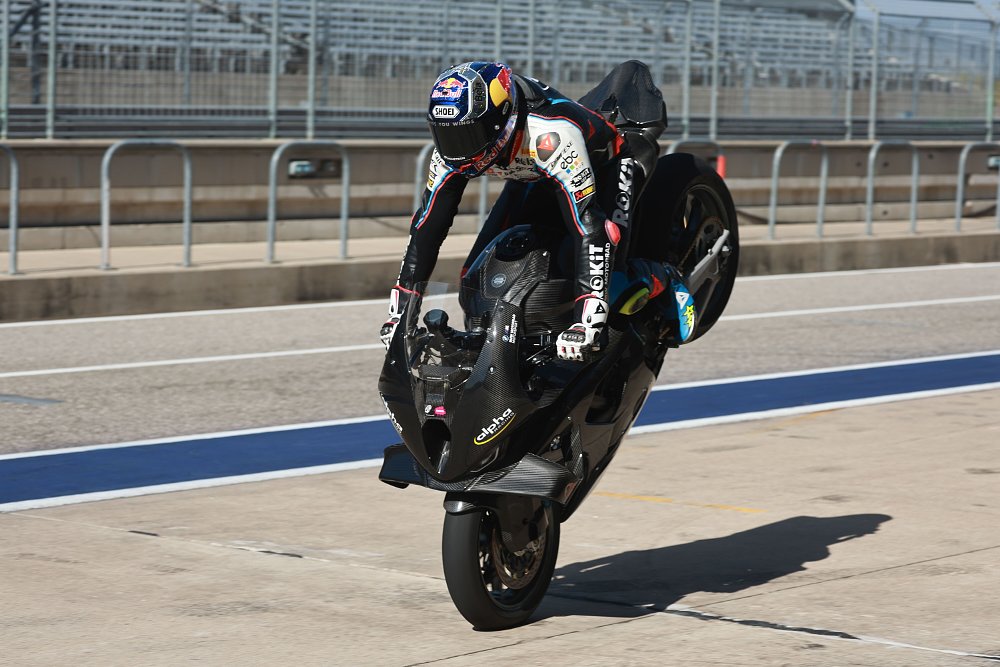
Basically, as the bike senses the fork near full extension and a wheelie looming it begins trimming power, so that when the wheelie is initiated the intrusion of the wheelie control feels especially gentle. It’s still plenty strict, mind you, it’s German. The system ended up buoying my confidence massively, because it was so reliable and cohesive.
A case for excess
Ultimately, that’s what a good track bike does — it is consistent, predictable, and easy to use. The problem is that the more power a motorcycle has, the more weight that gets stripped away, and the grippier the tires become, the harder it is for the machine to offer predictability and ease of use for the rider. Also, the harder it is to be affordable.
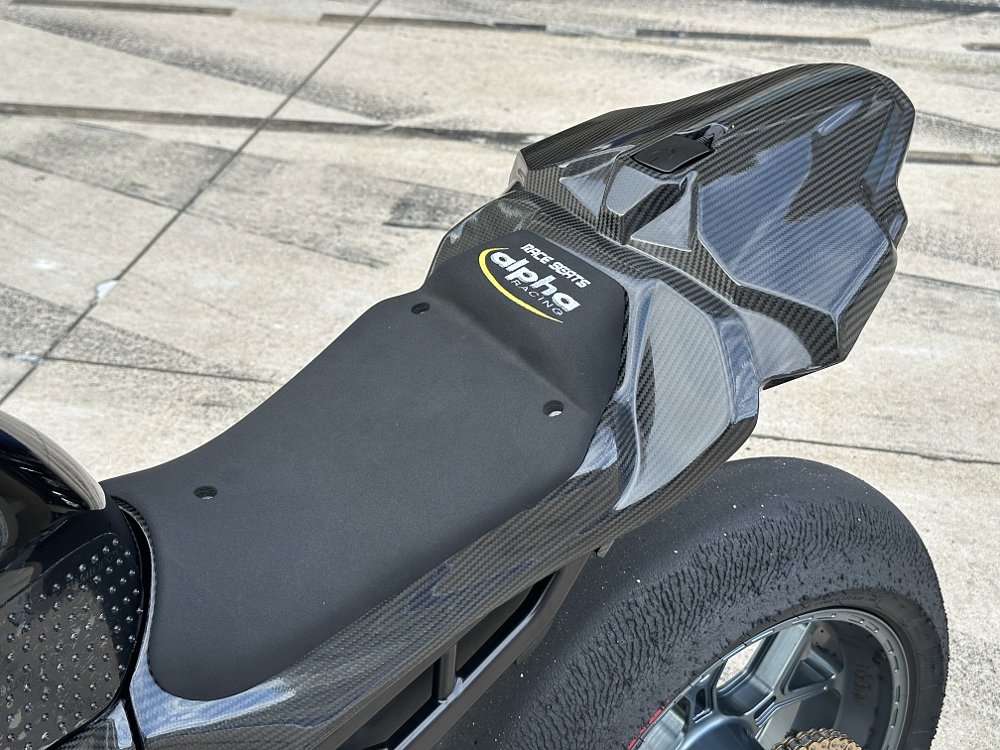
Lightness isn’t cheap, as our resident curmudgeon Lance likes to remind us, and alpha Racing’s M 1000 RR weighs about 50 pounds less than the (also claimed) 428 pounds of an over-the-counter M 1000 RR from BMW. That’s impressive, and probably expensive. In fact, I realized that while I had a blast riding alpha Racing’s track-prepped M 1000 RR Superstock bike on a MotoGP track, that’s not what convinced me that it’s worth the money.
That idea actually came from a conversation with my buddy Spurg, when he asked me if I knew the MSRP of a showroom-stock M 1000 RR. “Dude, it’s a $44,000 bike” he said, in the tone of a new father talking about how much daycare costs. And he makes a good point, even for a bike that has ABS and real headlights, a five-digit price that starts with a four is rarefied air.
I’ll get right to the point: It’s 20% more money for a fully prepped, Superstock-ready racing motorcycle than it is to buy the road-going version of the same thing. If you try to scale that down, it doesn’t pencil out. No way are we getting a brand-new, race-ready version of a Ninja 500 for $7,500 or a Yamaha YZF-R7 for $11,000. Aprilia has a track-prepped version of its $11,800 RS 660 but it’s close to $19,000.
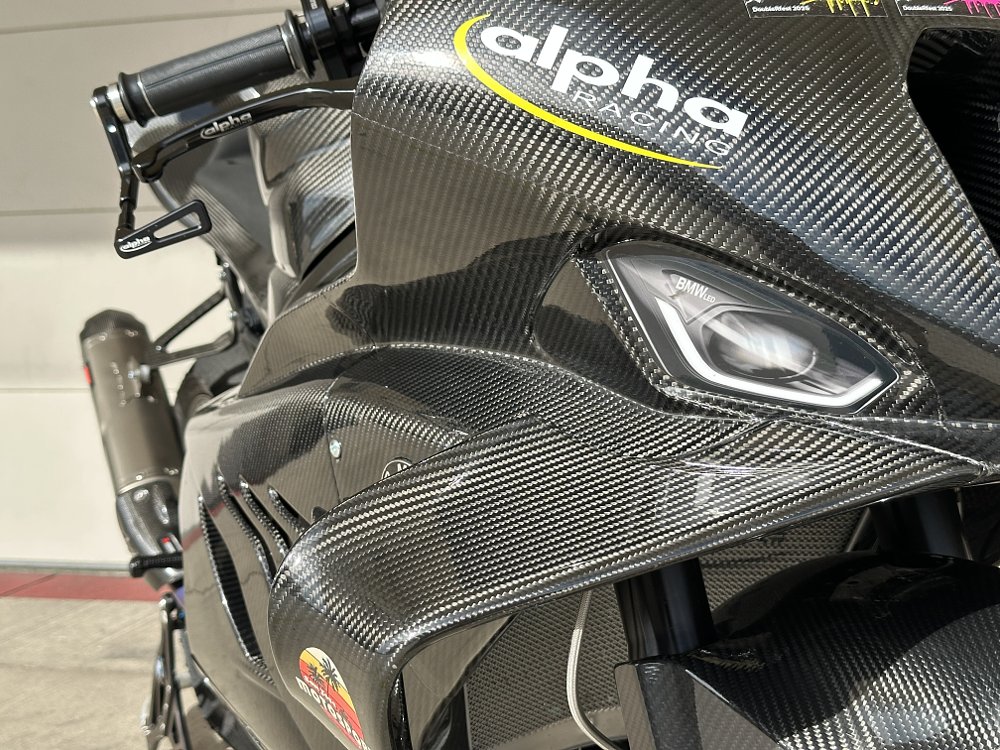
I know, I get it, titanium exhausts and fancy suspension components don’t become significantly cheaper when the bikes get smaller. Maybe there isn’t a market for it, anyway. Perhaps you think I have my head in the clouds, or worse, when I say the alpha Racing BMW M 1000 RR is a beacon of reasonable pricing.
Well it is, provided you think 40-something thousand dollars for an M 1000 RR street bike is worth it. And if you don’t then join me, won’t you? I’ll be over here pricing out aftermarket parts for a sub-100-horsepower track bike. Daydreaming about being one of the best riders in the world.
| 2025 alpha Racing M 1000 RR (Superstock) | |
|---|---|
| Price (MSRP) | ~$54,000 |
| Engine | 999 cc, liquid-cooled, 16-valve, inline-four |
|
Transmission, final drive |
Six-speed, chain |
| Claimed horsepower | 218 @ 14,500 rpm |
| Claimed torque | 83.3 foot-pounds @ 11,000 rpm |
| Frame | Aluminum twin-spar |
| Front suspension | Marzocchi 45 mm fork (Öhlins internals), adjustable for spring preload, compression and rebound damping; 5.1 inches of travel |
| Rear suspension | Öhlins TTX GP shock, adjustable for spring preload, compression and rebound damping; 4.6 inches of travel |
| Front brake | Nissin "M"-branded four-piston calipers, 320 mm discs |
| Rear brake | Nissin two-piston caliper, 240 mm disc |
| Rake, trail | 24.0 degrees, 4.2 inches |
| Wheelbase | 57.4 inches |
| Seat height | 34.25 inches |
| Fuel capacity | 4.3 gallons |
| Tires | Pirelli Diablo slick; 125/70R17 front, 200/65R17 rear |
| Claimed weight | 366 pounds (dry) |
| Available | Now |
| Warranty | ~1,500 km (limited) |
| More info | alpharacing.com |




